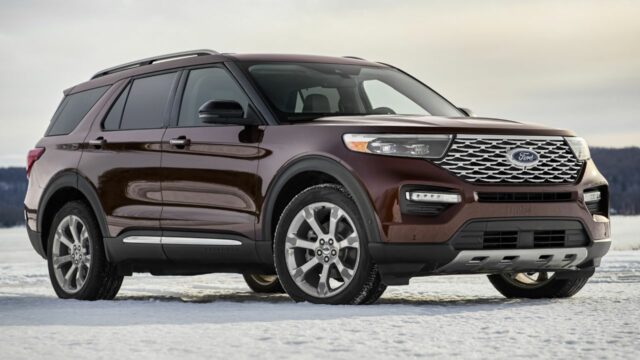2020 Ford Explorer is new from the ground up, lighter and sturdier










Ford has taken the time to reveal the new 2020 Explorer, a fully redesigned model with more of everything.
The Ford Explorer is America’s all-time best-selling SUV so it’s only natural that the new Ford Explorer gets a full plate of technology and mechanics. Let’s take it one at a time.
Technology
Ford says the 2020 Explorer can be specified with Active Park Assist 2.0 and reverse brake assist (both standard on the 2020 Explorer Platinum).

In addition, Ford is also offering the likes of Adaptive Cruise Control with Speed Sign Recognition and Co-Pilot360 suite, comprising assist features such as Pre-Collision with Automatic Emergency Braking, Pedestrian Detection, Forward Collision Warning and Dynamic Brake Support, just to name a few.
SEE MORE: This Ford Lamborghini Tractorri is going for auction
For more money, the Co-Pilot360 suite can be further expanded to include Evasive Steering Assist and Post-Impact Braking.

Customers can also choose a 10.1-inch touchscreen positioned in portrait configuration, Tesla-style, on the center console, and the updated SYNC 3 infotainment system. The latter supports Apple CarPlay, Android Auto, and Waze navigation.
The information displayed by the infotainment setup is shared on the optional 12.3-inch digital instrument cluster. This one features 3D-animated graphics when displaying details about the selected driving mode.
Powertrain
For the 2020 Explorer, Ford unlocks two EcoBoost engines. One is a 2.3-liter turbo’ed l4 (300 hp, 310 lb-ft) that equips the entry-level Explorer XLT and Explorer Limited models, while the other is a 3-liter twin-turbo V6 utilized by the Explorer Platinum.

The V6 makes 365 hp and 380 lb-ft of torque. Regardless of engine choice, customers get a 10-speed automatic transmission and steel disc brakes with heavy-duty calipers up front (heavy-duty rear calipers are optional).
Ford will build the 2020 Explorer SUV at the Chicago Assembly Plant.




READ MORE: 2019 Ford Ranger fuel consumption figures are officially out
